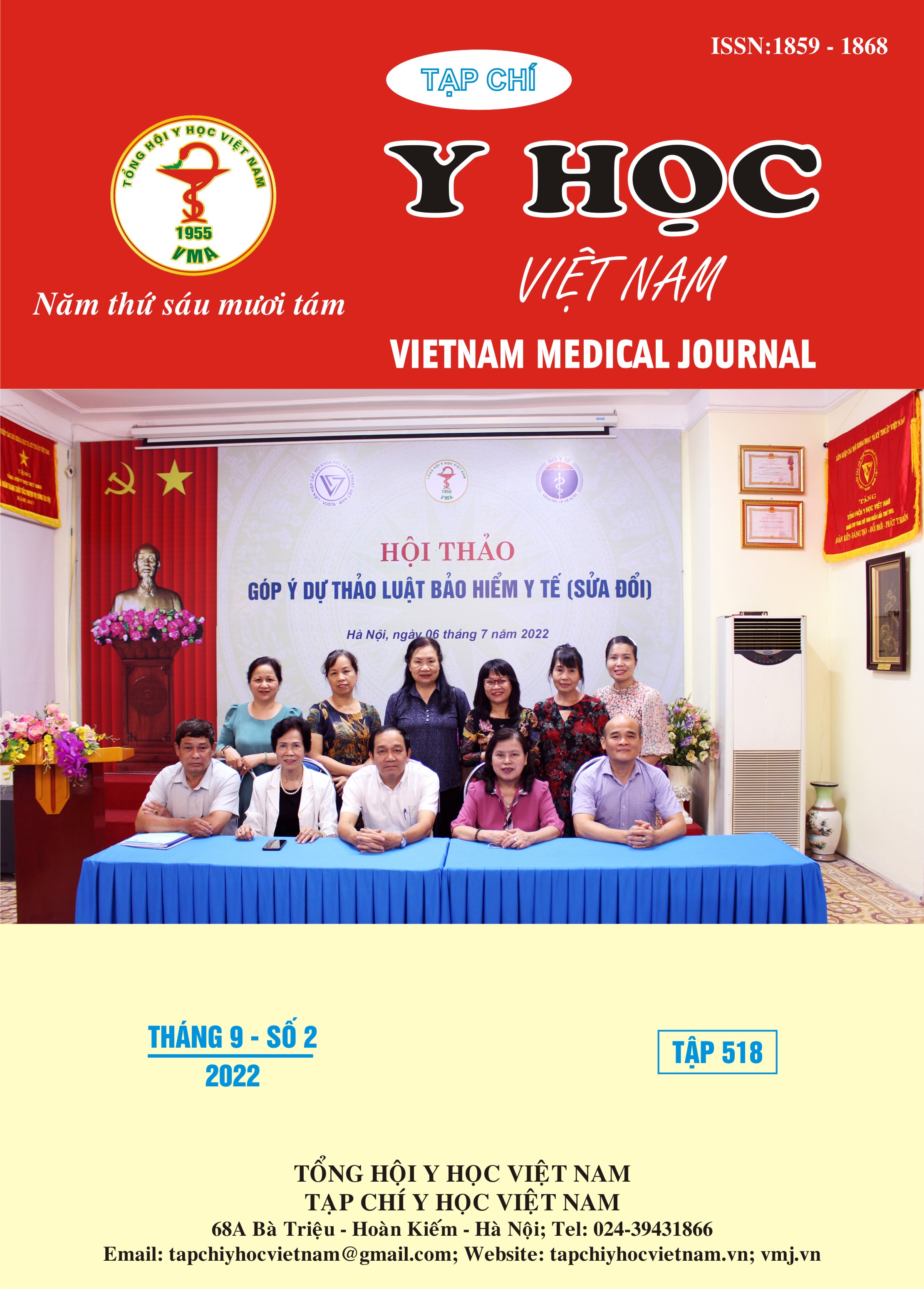SHORT-TERM EFFECTS OF ULTRASELECTIVE CONVENTIONAL TRANSARTERIAL CHEMOEMBOLIZATION INTERVENTION IN TREATMENT OF HEPATOCELLULAR CARCINOMA AT NATIONAL CANCER HOSPITAL
Main Article Content
Abstract
Objectives: The aim of this study was to evaluate the Short-term effects of ultraselective conventional transarterial chemoembolization intervention in treatment of hepatocellular carcinoma at National Cancer Hospital- Tan Trieu, from September 2021 to June 2022. Subjects and research methods: Uncontrolled clinical trials study on 50 patients with confirmed diagnosis of hepatocellular carcinoma who received ultra-selective chemotherapy embolization. Results: Average number of intervention times of study subjects: 1.44 ± 0.58 times, most of them only need to intervene once 60.0%. AFP levels and tumor size at the time of follow-up after 1 month and 3 months were significantly reduced (p < 0.05 and p < 0.01). Tumor response according to mRECIST criteria: After intervention 1 month and 3 months, response rate was 84%, disease progression PD was 4.0%. Key factors related to tumor response rate according to mRECIST: AFP concentration, tumor size and portal vein visualization before intervention (p < 0.05). Post-embolization syndrome (PES): mild adominal pain 54%, no pain 46.0%. Other symptoms: fatigue 48.0%; fever 38.0%, vomiting 12.0%. There were no cases of death or complications on organs during and immediately after the intervention process. Conclusion: The ultraselective conventional transarterial chemoembolization technique is safe, has few complications, and is highly effective in the treatment of hepatocellular carcinoma.
Article Details
Keywords
Hepatocellular carcinoma (HCC), ultraselective conventional transarterial chemoembolization
References
2. Miyayama S., Yamashiro M., Ikeda R., et al. (2021). Efficacy of Superselective Conventional Transarterial Chemoembolization Using Guidance Software for Hepatocellular Carcinoma within Three Lesions Smaller Than 3 cm. Cancers (Basel), 13 (24),
3. Thái Doãn Kỳ (2015). Nghiên cứu kết quả điều trị ung thư biểu mô tế bào gan bằng phương pháp tắc mạch hóa chất sử dụng hạt vi cầu DC Beads. Viện Nghiên cứu Khoa học Y dược Lâm sàng 108,
4. Nguyễn Trung Kiên (2021). Đánh giá kết quả nút mạch hóa chất điều trị ung thư biểu mô tế bào gan có huyết khối tĩnh mạch cửa, Luận văn chuyên khoa cấp II, Học viện Quân Y.
5. Nguyễn Duy Thịnh, Bùi Văn Giang, Phạm Thế Anh, et al. (2021). Đánh giá kết quả bước đầu điều trị ung thư biểu mô tế bào gan bằng phương pháp nút mạch sử dụng cồn tuyệt đối và Lipiodol Tạp chí Y học Việt Nam, 505 (2), 82-86.
6. Golfieri R., Cappelli A., Cucchetti A., et al. (2011). Efficacy of selective transarterial chemoembolization in inducing tumor necrosis in small (<5cm) hepatocellular carcinomas. Hepatology, 53 (5), 1580-1589.
7. Albrecht K. C., Aschenbach R., Diamantis I., et al. (2021). Response rate and safety in patients with hepatocellular carcinoma treated with transarterial chemoembolization using 40-µm doxorubicin-eluting microspheres. Journal of cancer research clinical oncology, 147 (1), 23-32.
8. Charoenvisal C., Tanaka T., Nishiofuku H., et al. (2021). Feasibility and Techniques of Securing 3D-Safety Margin in Superselective Transarterial Chemoembolization to Improve Local Tumor Control for Small Hepatocellular Carcinoma: An Intend-to-Treat Analysis. Liver Cancer, 10 (1), 63-71.


